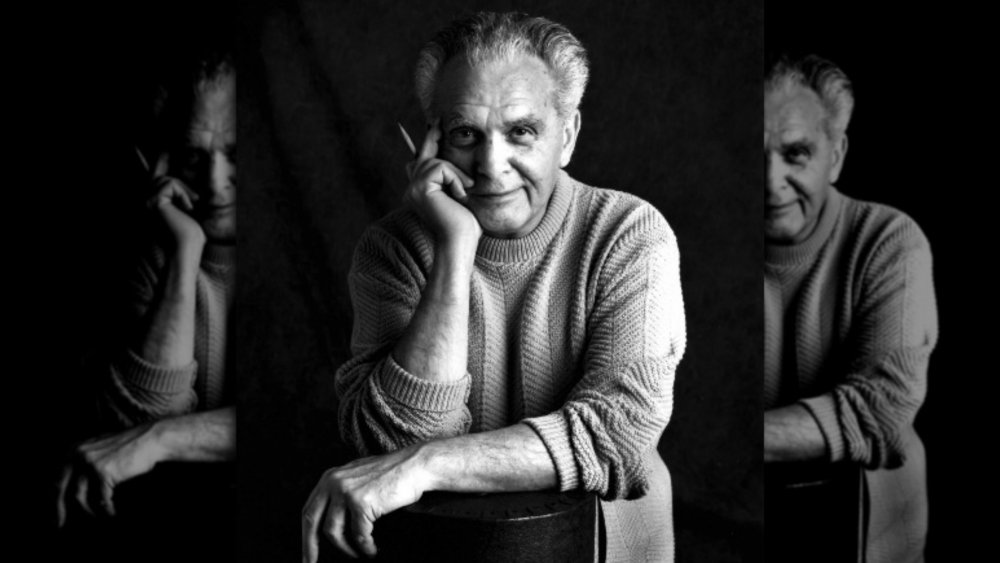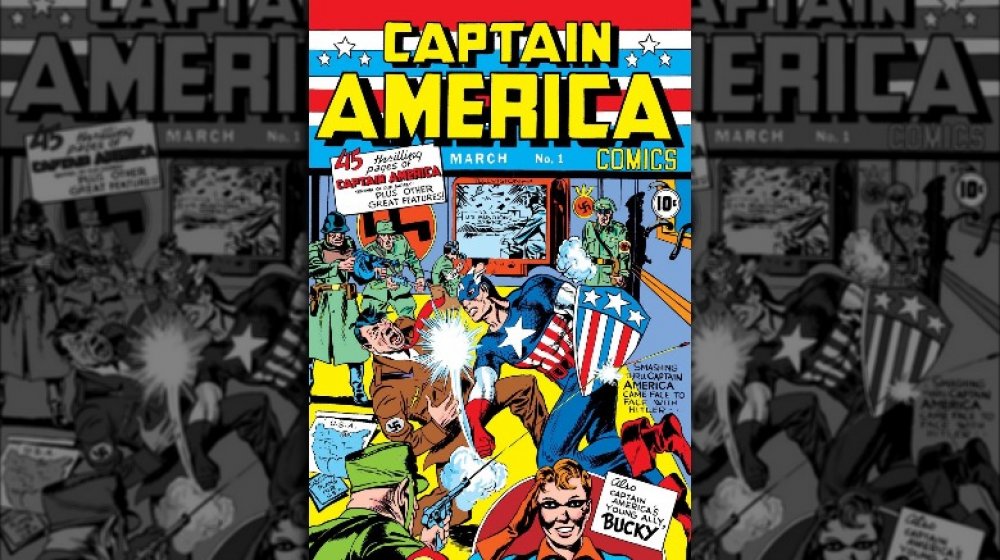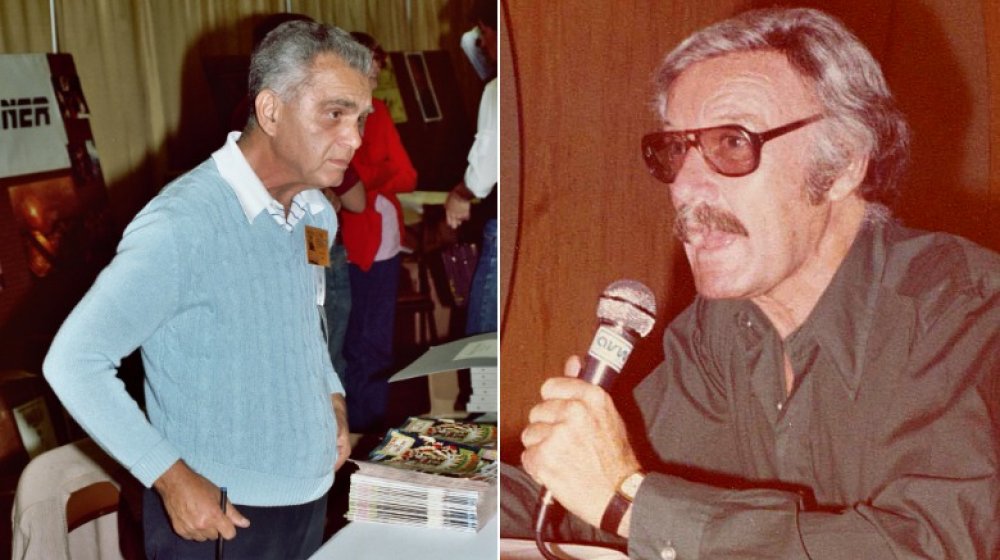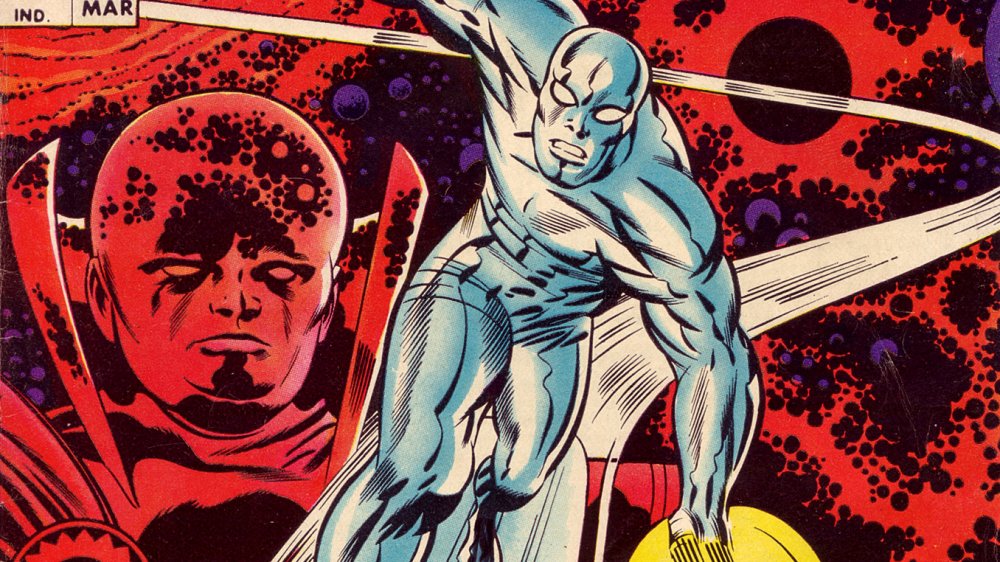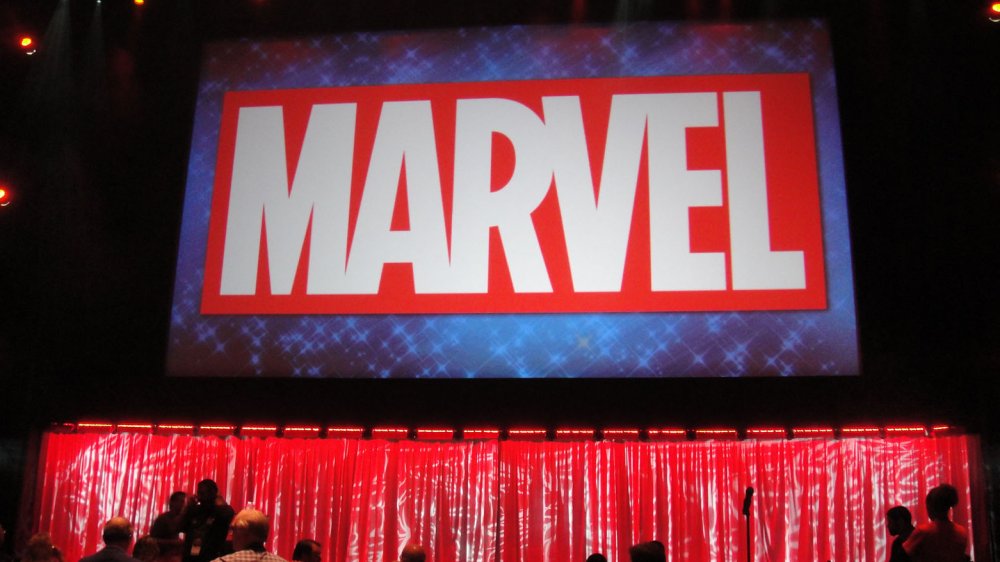The Untold Truth Of Marvel Comics' Jack Kirby
Iron Man. The Fantastic Four. Black Panther. The X-Men. The Hulk. While these characters were created decades ago, they've become central to modern culture; the wildly-successful Marvel Cinematic Universe has created a generation of fans across the globe.
If someone were to ask you to name the person who created these characters, you'd probably say "Stan Lee." And you'd be half correct. Stan Lee was a brilliant comic writer who rose through the ranks to become editor-in-chief of Marvel Comics. Under his leadership, Marvel created some of the world's most iconic heroes. But central to this success was another man — a man whose name has been forgotten by everyone but die-hard comic book fans. That man was Jack Kirby, Marvel's prolific illustrator and creative mastermind.
Per the Encyclopedia Britannica, Jack Kirby was born in Manhattan to a family of Austrian-Jewish immigrants. (Kirby's birth name was Jacob Kurtzberg, but he bounced around between various pseudonyms before settling on Jack Kirby.) Kirby loved drawing from a young age, and one of his first jobs was as an "inbetweener" for Max Fleischer Animation Studios. Per the Kirby Museum, this meant that Kirby had to draw the action frames that were interspliced between the main frames of the studio's animated movies. While Kirby didn't enjoy this work, it did cause him to reflect on how motion and speed could be represented graphically, which became a hallmark of his future artwork.
Jack Kirby became a freelance comic artist, working closely with Joe Simon
By the late 1930s, the American comic industry was booming, and Jack Kirby decided to enter the business. He performed freelance work for a few different comic companies before settling into a partnership with the writer-editor Joe Simon. After some initial successes, the duo was hired by Timely Comics, which would later become Marvel, per Britannica. In 1940, while at Timely, the pair created the now-famous hero Captain America, who was an immediate commercial success.
But Kirby and Simon were unsatisfied with the pay rate at Timely, so they negotiated a contract with National Comics Publications (later called DC) which would pay them much more. They did so in secret, however, hoping to continue to profit from their work on Captain America. But, per a biography by Ronin Ro, their betrayal was discovered and they were fired by Timely.
After just a couple years at National Comics, Jack Kirby's work was interrupted — he had been drafted to fight in World War II. According to Ronin Ro, Kirby's art skills were put to good use during the war; he was tasked with the dangerous job of scouting out towns and drawing maps for the army to use.
Jack Kirby had a complicated relationship with Stan Lee
When Kirby returned to the States, he and Simon again bounced back and forth between different comic companies on a freelance basis. The duo didn't restrict themselves to any one genre. Romance, crime, Western, hero — they did it all. In 1953, writes Ronin Ro, Kirby and Simon even formed their own comic company, Mainline Publications, but it was short-lived. Tired of the comic world, Joe Simon decided to go into advertising, while Kirby continued his freelance career.
By the end of the 1950s, Kirby's freelance work had brought him back to Timely Comics, which was now known as Atlas Comics, but not yet known as Marvel comics. Kirby was hesitant to return to the company, though, as he suspected that Stan Lee (now the editor-in-chief) was the reason he had been fired from Timely in 1941; per Fred van Lente, Kirby believed that Lee had told their bosses about his secret deal with National Comics.
But soon enough, Kirby and Lee developed an excellent professional (if not friendly) relationship. During the 1950s and '60s — the so-called "Silver Age" of comics — Kirby and Lee developed some of the most iconic superheroes the world has ever seen: Iron Man, the Hulk, Thor, the Fantastic Four, the X-Men, Black Panther, and more. (Notably, Stan Lee chose Steve Ditko to illustrate Spider Man, as he didn't like the artistic direction Jack Kirby had in mind for the character, per the Kirby Museum.)
Jack Kirby's art made Marvel Comics a success
Lee is often thought of as the "idea man" of the Kirby-Lee duo, while Kirby is remembered as the illustrator. In reality, as explained by the Observer, Kirby played an active role in creating Marvel's superheroes and planning out storylines. Even so, it's unquestionable that Kirby's biggest contribution to Marvel was his unique and powerful art style; Kirby's artistic approach "became the governing philosophy of the entire publishing company," and was religiously taught to each incoming Marvel illustrator, per the Metropolitan.
Despite Kirby's central role at Marvel Comics, his employment remained on a freelance basis, according to Forbes. And, over his time at the company, Kirby became increasingly frustrated by the lack of credit he received, with Stan Lee receiving most of the public attention. So, at the end of 1970, Kirby quit his job at Marvel, per the Britannica. He would spend the rest of his career writing for a variety of publications, including DC, Pacific Comics, and even a brief return to Marvel in the late '70s. (Hey, the man couldn't stay away — can you blame him?) Unfortunately, few of Kirby's later creations were as famous as what he produced with Lee in the 1960s.
After his passing, Jack Kirby's family sued Marvel
In 1994, Kirby died of heart failure at the age of 76, per the New York Times. He had spent his final decade on Earth in a series of legal disputes with Marvel Comics as he tried to regain possession of his original page boards. (He did get some of them back.)
An even bigger legal battle emerged after Kirby's death. In 2010, per CBR, Jack Kirby's children sued Marvel "to terminate copyrights to, and receive a share of profits from, characters created or co-created by their father." In 2011, however, a New York Federal Court sided in favor of Marvel, as Leagel reports, and a 2013 ruling by the United States Court of Appeals upheld that decision. But Kirby's family remained determined, and prepared to take the case all the way to the Supreme Court.
At that point, the dispute became highly publicized, and fans weighed in on both sides. In 2014, days before the planned Supreme Court session, Marvel reached a settlement with the Kirby estate, per Deadline. The amount of cash the Kirbys received in the settlement remains undisclosed.
